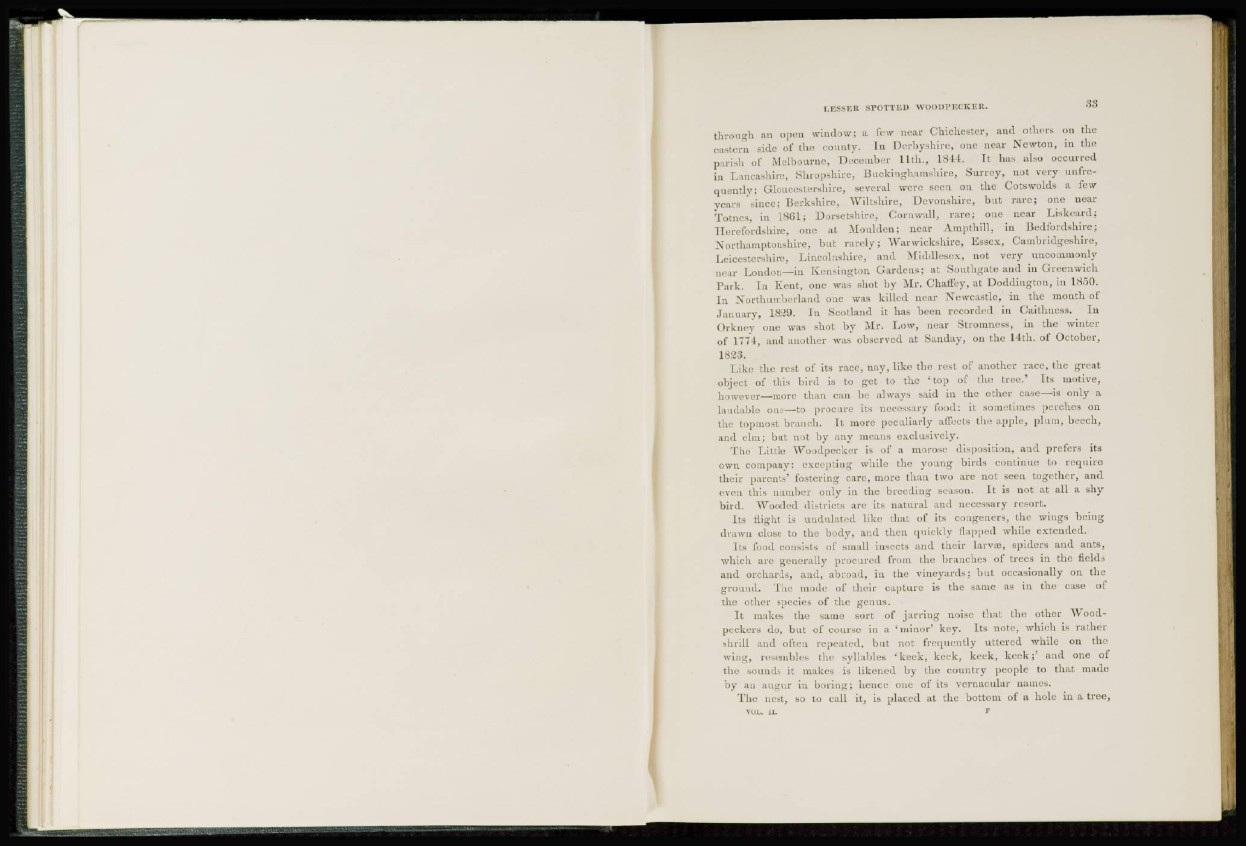
through an open window; a few near Chichester, and others on the
eastern side of the county. In Derbyshire, one near Newton, in the
parish of Melbourne, December llth., 1844. It has also occurred
in Lancashire, Shropshire, Buckinghamshire, Surrey, not very unfrequently;
Gloucestershire, several were seen on the Cots wolds a few
years since; Berkshire, Wiltshire, Devonshire, but rare; one near
Totnes, in 1H(¡1; Dorsetshire, Cornwall, rare; one near Liskeard;
Herefordshire, one at Moulden; near Arnpthill, in Bedfordshire;
Northamptonshire, but rarely; Warwickshire, Essex, Cambridgeshire,
Leicestershire, Lincolnshire, and Middlesex, not very uncommonly
near London—in Kensington Gardens; at Southgate and in Greenwich
Park. In Kent, one was shot by Mr. Chaffey, at Doddington, in 1850.
In Northumberland one was killed near Newcastle, in the month of
January, 18¡¿9. In Scotland it has been recorded in Caithness. In
()rknev one was 'hot by Mr. Low, near Stromness, in the winter
of 1774, and another was observed at Sauday, on the 14th. of October,
1823.
Like the rest of its race, nay, like the rest of another race, the great
object of this bird is to get to the 'top of the tree.* Its motive,
however—more than can be always said in the other case—is only a
laudable one—to procure its necessary food: it sometimes perches on
the topmost branch. It more peculiarly affects the apple, plum, beech,
and elm; but not by any means exclusively.
The Little Woodpecker is of a morose disposition, and prefers its
own company: excepting while the young birds continue to require
their parents' fostering care, more than two are not seen together, and
even this number only in the breeding season. It is not at all a shy
bird. Wooded districts arc its natural and necessary resort.
Its night is undulated like that of its congeners, the wings being
drawn close to the body, and then quickly flapped while extended.
Its food consists of small insects and their Larvas, spiders and ants,
which arc generally procured from the branches of trees in the fields
and orchards, and, abroad, in the vineyards; but occasionally on the
ground. The node of iheir capture is the same as in the case of
the other species of the genus.
It makes the same sort of jarring noise that the other Woodpeckers
do, but of course in a 'minor' key. Its note, which is rather
shrill and often repeated, but not frequently uttered while on the
wing, resembles the syllables 'keek, keek, keek, keek;' and one of
the sounds it makes is likened by the country people to that made
by an augur in boring; hence one of its vernacular names.
The nest, so to call it, is placed at the bottom of a hole in a tree,
VOL, II. P